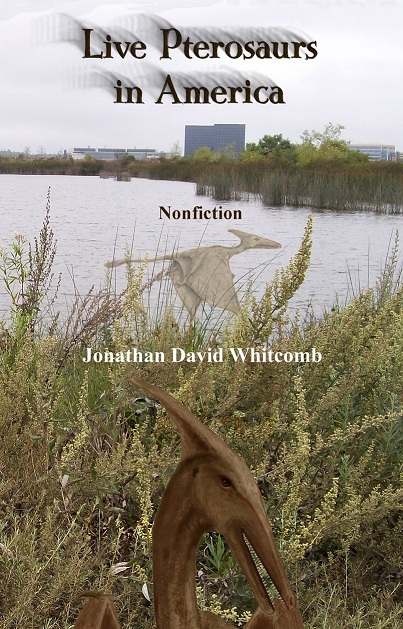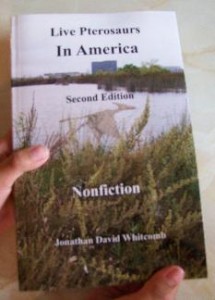It’s difficult to compile a list of books by sales ranking on Amazon, when “cryptozoology” is the search word used on that book-seller site. Some obvious cryptozoology books do not have that word in their title or subtitle, so they are probably left out of the search results. The following are paperback and hardback, from top to bottom by sales ranking, the apparent top twenty on the evening of July 27, 2012, although it is very possible that important books may have been missed.
- Looking for Bigfoot, by Bonnie Worth
- Destination Truth: Memoirs of a Monster Hunter, by Josh Gates
- Sasquatch: Legend Meets Science, by Jeff Meldrum
- Tales of the Cryptids: Mysterious Creatures, by Kelly Milner Halls and others
- DK Readers: Beastly Tales, by Malcolm Yorke and Lee Davis
- Live Pterosaurs in America (third edition), by Jonathan Whitcomb
- Biblical Cryptozoology Revealed Cryptids of The Bible, by Dale Stuckwish
- Cryptozoology A to Z, by Loren Coleman and Jerome Clark
- Field Guide to Lake Monsters, Sea Serpents, by Loren Coleman and others
- Real Monsters, Gruesome Critters, and Beasts from the Darkside, by Brad Steiger
- Bigfoot Observer’s Field Manual, by Robert W. Morgan
- The Beasts that Hide from Man, by Karl Shuker
- Tom Slick: True Life Encounters in Cryptozoology, by Loren Coleman
- The Michigan Dogman, by Linda S. Godfrey
- Bigfoot! – The True Story of Apes in America, by Loren Coleman
- Claw, Jaws, and Dinosaurs, by Kent Hovind, William Gibbons, and others
- Hunting the American Werewolf, by Linda S. Godfrey
- Monsters of Texas, by Ken Gerhard and Nick Redfern
- In Search of Sasquatch, by Kelly Milner Halls
- Monsters of West Virginia: Mysterious Creatures, by Rosemary Ellen Guiley
Books on the Loch Ness creature seem to have less selling depth than they once did. Bigfoot is still strong. The old standard Cryptozoology A to Z is no longer number one in this genre, although it was on the top for years.
Leaving aside fictions and e-books (including Kindle) here’s a listing of many cryptozoology books that are best selling on Amazon
The three authors, from British Columbia in Canada, Texas, and California, have each written at least one edition of a nonfiction book that primarily deals with sightings of possible pterosaurs in North America.
Advertisement

Live Pterosaurs in America (third edition), cryptozoology, nonfiction
The second paragraph of the introduction of the book:
This book might discomfort, even offend, a few readers; please consider the feelings of those who have revealed to us their encounters with what seem to be live pterosaurs, for some of them have suffered more than discomfort. I intend to comfort those innocent victims who have been ridiculed or ostracized because of a cultural weakness, for each has seen something unaccepted by their society. Each eyewitness deserves listeners who will open their minds, really listen. Consider their experiences.
From Page 70:
The cryptozoologists were not disappointed, with many sightings of the flying lights and a few sightings of the forms of large flying creatures that were unlike bats. One of them flew close enough that one man almost fell over. The men stayed only a few nights, but the investigation continued into 2008, with a number of visits to this location.
From Page 71 (another expedition in North America):
Late in 2007, I received an email from Peter Beach, a biology professor. He had gone on two expeditions into Africa (searching for the Mokele-mbembe cryptid), before becoming involved in living-pterosaur research.
“I went on a short trip to the Yakima River this summer . . . because there was a [sighting]. We were unable to get a picture but we saw many . . . flashing lights. I would have assumed that [they] were fireflies but we [don’t] have them in Washington. One of the flashes took off from a big tree overhanging the river and made a kind of flashing coma turn. Many flashes were parallel to the river. The river at that point [has] a crook . . . and there were many fish . . . Prime hunting grounds for fish-eating birds. Only these things fish at night with bioluminescence.”



